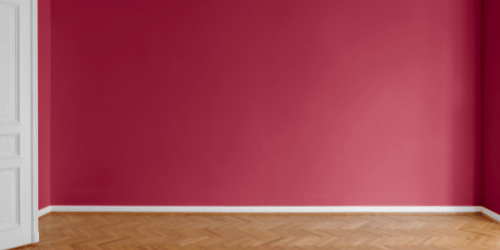Painting the exterior of your home can be a daunting task, especially when faced with extreme weather conditions. Whether it’s the scorching heat of summer or the freezing cold of winter, each season presents its own set of challenges. In this blog post, we will explore the best practices for painting exteriors during extreme weather conditions, ensuring a durable and beautiful finish for your home in Prosper, TX.
Painting exteriors during extreme weather conditions requires careful planning, the right materials, and proper techniques to ensure a long-lasting and professional finish.
Understanding the Challenges of Extreme Weather
Heat and Sun Exposure
High temperatures can significantly impact paint drying time, causing it to dry too quickly and potentially leading to uneven application and visible brush marks. This can affect the overall finish and durability of the paint. Additionally, prolonged exposure to UV radiation can cause paint to fade and deteriorate more rapidly, compromising the appearance and longevity of the painted surface. Proper surface preparation becomes even more critical in these conditions, as it ensures that the paint adheres well and performs as expected despite the challenges posed by heat. Adequate preparation helps mitigate these issues, leading to a more durable and aesthetically pleasing result.
Cold Weather Painting
Cold temperatures can extend drying time significantly, which increases the risk of paint failure, such as cracking or peeling. To mitigate this, using paints specifically formulated for low temperatures can help achieve better results, as these are designed to cure properly even in cooler conditions. Additionally, it’s crucial to ensure the surface is dry and free from moisture or frost before painting, as damp surfaces can prevent proper adhesion and lead to long-term issues with the paint’s durability and appearance. Proper preparation and choosing the right paint are key to overcoming the challenges of painting in cold weather.
Humidity and Rain
High humidity levels can negatively impact paint adhesion and significantly extend drying time, leading to potential issues like peeling or blistering. To avoid these problems, it’s essential to monitor the weather forecast and plan your painting project during periods of lower humidity and dry conditions. By doing so, you can steer clear of unexpected rain that could ruin freshly painted surfaces. Additionally, taking protective measures like using tarps and covers can safeguard your work from sudden rain showers, ensuring that the paint dries properly and adheres well to the surface. Proper planning and protection are key to a successful painting project in humid or unpredictable weather.
Best Practices for Painting in Hot Weather
Timing Your Painting Project
Painting during the early morning or late afternoon can help avoid the intense midday heat, which can cause paint to dry too quickly and lead to uneven application. Focusing on shaded areas first and following the sun’s path as you work can further prevent rapid drying, ensuring a smoother and more consistent finish. Additionally, closely monitoring the weather forecast allows you to select the best days for painting, avoiding days with extreme temperatures or unexpected rain. By carefully timing your painting project, you can achieve better results and extend the longevity of your paint job.
Choosing the Right Paint
Choosing heat-resistant paints is essential for improving durability in areas exposed to high temperatures, as these paints are specifically formulated to withstand extreme heat without deteriorating. Opting for light colors can also make a significant difference, as they reflect heat better than darker shades, reducing overall heat absorption and helping maintain the integrity of the paint. Additionally, prioritizing quality over cost by investing in high-quality paint ensures better performance and longevity, particularly in extreme conditions. While it might be tempting to save money upfront, quality paints provide better coverage, protection, and resistance, ultimately offering greater value in the long run.
Application Techniques
Applying thin coats of paint is crucial for achieving an even finish and reducing the risk of cracking, especially in hot conditions. Thin layers dry more uniformly, preventing issues that can arise from thick, uneven application. Proper ventilation is equally important, as good airflow around the painted area helps the paint dry more efficiently and evenly. In addition to these technical considerations, it’s essential to keep yourself hydrated and take regular breaks, especially when working in the heat. Staying hydrated and resting can prevent heat exhaustion, ensuring that you can work safely and effectively throughout the project.
Best Practices for Painting in Cold Weather
Surface Preparation
When painting in cold weather, it’s essential to thoroughly clean and dry the surface beforehand, as any moisture or dirt can interfere with paint adhesion. Proper cleaning ensures a smooth and clean base for the paint, which is crucial in low temperatures. Applying a high-quality primer can further enhance adhesion and durability, providing a solid foundation that helps the paint bond better and last longer. Additionally, closely monitoring the surface temperature is important to ensure it meets the minimum recommended level for the paint being used. Painting on a surface that’s too cold can lead to poor adhesion and an uneven finish, so keeping an eye on the temperature is key to a successful project.
Choosing the Right Paint
Selecting cold-weather paints specifically formulated for low temperatures is essential for enhancing performance when painting in colder conditions. These paints are designed to cure properly even in chilly environments, ensuring a smooth finish and lasting durability. Adding paint additives can also be beneficial, as they improve flow and leveling, making the application process easier and more effective in cold weather. Additionally, storing paint in a warm environment before use helps maintain its consistency, preventing it from becoming too thick or difficult to work with. Proper preparation with the right products and techniques ensures a successful paint job, even in challenging cold conditions.
Application Techniques
In cold weather, applying slightly thicker coats of paint can help compensate for slower drying times, ensuring better coverage and adhesion. However, it’s crucial to allow extended drying time between coats, making sure each layer is fully dry before applying the next to prevent issues like peeling or uneven texture. To maintain a suitable temperature for painting, using portable heaters and fans can be effective. These tools help create an environment where the paint can cure properly, reducing the risk of problems associated with cold conditions and ensuring a smooth, durable finish.
Best Practices for Painting in Humid Conditions
Surface Preparation
Before painting, it’s crucial to use a moisture meter to ensure the surface is adequately dry, as excess moisture can affect paint adhesion and finish. Cleaning the surface thoroughly is also essential, particularly if mildew or mold is present due to high humidity; removing these contaminants ensures a clean base for the paint. Applying a primer specifically designed for humid conditions can further improve paint adhesion and durability, creating a more effective barrier against moisture. Proper preparation in these areas ensures that the paint adheres well and performs effectively, even in challenging environments.
Choosing the Right Paint
Opting for humidity-resistant paints formulated to resist moisture can significantly enhance the durability of your paint job in high-humidity environments. These paints are designed to withstand moisture and prevent issues like peeling and blistering. Adding mildew-resistant additives to the paint can further protect against mold growth, ensuring a cleaner and more durable finish. Additionally, using high-quality paints is crucial, as they offer better coverage and longevity, maintaining their appearance and performance even in challenging conditions. Investing in these specialized products helps ensure a long-lasting and effective paint job, even in humid environments.
Application Techniques
Applying thin coats of paint is important in humid conditions, as it helps the paint dry more evenly and reduces the risk of issues like dripping or uneven texture. Allowing extended drying time between each coat is also crucial, giving the paint ample time to dry thoroughly before applying additional layers. Additionally, ensuring good ventilation around the painted area helps improve airflow, which can aid in the drying process and prevent moisture-related problems. Proper application techniques and ventilation are key to achieving a smooth and durable finish in humid environments.
Answering Common Questions
Q1 Can I paint exteriors during the rainy season?
A1 It’s best to avoid painting during the rainy season as moisture can affect paint adhesion and drying time. If necessary, use tarps and covers to protect freshly painted surfaces.
Q2 What is the ideal temperature range for exterior painting?
A2 The ideal temperature range for exterior painting is typically between 50°F and 85°F (10°C to 29°C). However, always check the paint manufacturer’s recommendations.
Q3 How can I prevent paint from peeling in extreme weather?
A3 Proper surface preparation, using high-quality paints, and following recommended application techniques can help prevent paint from peeling in extreme weather conditions.
The Impact of Climate on Exterior Painting
Climate plays a significant role in the success of exterior painting projects. Extreme temperatures, humidity, and precipitation can all affect paint performance and longevity. Understanding these factors and planning accordingly can help achieve the best results.
Seeking Expert Advice
For complex painting projects or when in doubt, seeking professional advice is always a good idea. Professional painters have the experience and knowledge to handle extreme weather conditions and can ensure a high-quality finish for your home.
Conclusion
Painting the exterior of your home during extreme weather conditions can be challenging, but with the right preparation, materials, and techniques, it is entirely achievable. By understanding the specific challenges posed by heat, cold, and humidity, and by following best practices tailored to these conditions, you can ensure a durable and beautiful finish for your home. Remember, when in doubt, seeking professional advice can make a significant difference in the outcome of your project. At Pristine Luxury Remodeling, we are committed to helping you achieve the best results, no matter the weather.
Visit us at Pristine Luxury Remodeling
For more information and personalized guidance visit us at Pristine Luxury Remodeling, We specialize in providing exceptional remodeling services that elevate your space into a masterpiece of luxury.







